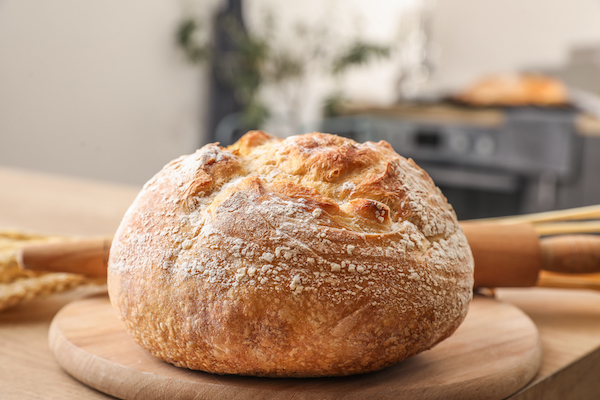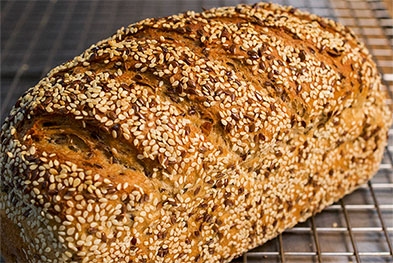-
Home > News & Events > Blog > Yeast & Baking

Yeast, as one of the four basic ingredients, is widely used in daily staples such as steamed bread, buns, bread and other fermented pasta. Without yeast, there would be no steamed bread or bread. The characteristics of yeast are as follows.
What is yeast?
Yeast, is a pure biological fermentation agent bread, indispensable for the production of steamed bread, buns and other fermented pasta. It contains the essential amino acids, B vitamins, trace elements, carbohydrates, and a variety of bio-active substances. Yeast is a kind of invisible unicellular microorganism, whose shape is round, oval, or rod and whose size varies with different yeast species. With the development of modern science and technology, people are able to breed species for different purposes for industrial production.
History of Yeast
As early as 3000 BC, humans began using yeast to produce a fermentation product, when people did not know yeast. In the 17th century, a baker who knows brewing tried to use beer precipitate (i.e. yeast) to ferment dough, and found it had a strong role in fermentation, and compared with the traditional "fermentation starter", first, it was significantly faster in fermentation, shortening the time from more than one day to a few hours; second, there was little or no acid produced in the dough. So this method of fermentation quickly spread around the world. This can be regarded as the start of the yeast industry, and the yeast industry has developed more than 200 years of history since then.
The production of yeast in China began in 1922, with a history of more than 80 years. With the development of Angel Yeast and a number of other yeast companies, China's active dry yeast production technology and capability has reached the international advanced level. Take the largest domestic company Angel Yeast as an example: Angel Yeast Co., Ltd, founded in 1986, is a listed high-tech yeast company in China, which is specialized in the production of yeast and yeast derivatives. Its production line brings together modern European yeast production process, special equipment and control technology, and the single yeast production line with the largest production capacity in the world was built in 2001. Its products passed the ISO9001 and HACCP certification, exported to more than forty countries and regions in Europe, America, Australia, Africa and Asia. Angel Yeast is the only listed high-tech company of the yeast industry in China. In February 2002, "Angel" trademark was recognized as "China Famous Brand."
Varieties of Dough Yeast
The dough yeast has two varieties: one is fresh yeast, and the other is highly active dry yeast. The fresh yeast, known as compressed yeast, is produced through the expansion and reproduction of yeast in molasses medium, separation and crushing. According to sugar tolerance, the active dry yeast is divided into high sugar active dry yeast and low sugar active dry yeast. High sugar active dry yeast is mainly used to make bread as it can adapt the higher sugar content of the environment in bread making; the low sugar active dry yeast is mainly used to make European style staple bread, steamed bread, stuffed buns and other pastries with lower sugar content.
Characteristics of Yeast
The fermentation of yeast in the dough is the use of carbon dioxide and other substances produced by the life activities of yeast, and the series of complex changes make the dough elastic and give bread unique color, aroma and taste. Unlike chemical substances, yeast has its own life and is a typical facultative anaerobic microorganism which can survive with/without oxygen.
As yeast is a microorganism, it is bound to need some living conditions. If we grasp its characteristics, we can make it service the baking industry better. The main factors that affect yeast fermentation include the nutrients, temperature, pH value, and humidity. Yeast nutrients are mainly carbohydrate, and yeast can only use monosaccharidine in the fermentation process. The little monosaccharide in the flour cannot meet the needs of the fermentation of the dough. The monosaccharide required for the yeast fermentation is mainly from two aspects: one is formed from the starch hydrolysis of the flour; the other is formed through the enzymes hydroxylation of the sucrose in the ingredients. Although yeast needs sugar substances for nourishment, but when we add an excess of sugar, due to the osmotic pressure of the sugar production, the sugar will inhibit the growth and reproduction of yeast, so the optimum sugar content in the flour is generally 4-6%. Like other organisms, temperature is the most sensitive factor for yeast; the temperature for yeast growth is between 27-28 ℃, the optimum temperature is 28 ℃. Therefore, the room temperature for dough fermentation should be controlled below 30 ℃ for the booming of the yeast, and hence for final proofing of the dough. The yeast activity is enhanced as the temperature rises, so is the gas production. Experiments show that when the dough temperature is 38 ℃, the gas production is maximum.
Thus, the room temperature of the dough fermentation is best controlled between 36-40 ℃. If the temperature is too high, yeast will die of heat, the bacteria will grow, while the fermentation activity decreases. With the growth rate of yeast varies in accordance with the dough moisture content. Within a certain range, the more water, the faster the yeast fermentation is, so the degree of softness and hardness of the dough determines the pace of fermentation. In addition, the quality of the flour, other ingredients such as oil, milk, salt in the dough are also closely related to the dough fermentation. in actual operation, these also should be noted.
Understanding the habits of yeast in the dough, we should do as much as possible to create a very comfortable living environment for the yeast to make it give full play of its capabilities and efficiency, to make baking even easier.
Advantages of Yeast
Yeast has many incomparable advantages over other products in fermentation:
1. Ito improves the nutritional value of the fermented foods
Yeast itself has a high nutritional value for it is mainly composed of protein and carbohydrate composition, and is rich in B vitamins and other trace elements, calcium, and iron. See the table below.
Nutrients in Yeast
| Ingredient | Protein | Fat | Calcium | Iron | VB1 | VB2 | Pantothenic | Niacin |
| Content | 45% | 4-7% | 100mg/100g | 18mg/100g | 7mg/100g | 3mg/100g | 3-9mg/100g | 56. 8mg/100g |
Fermentation makes the yeast bloom, thereby speeding up the yeast fermentation rate makes an increase in bread nutrition; yeast contains a variety of enzymes that can Hydrolyze starch and cellulose hydrolysis into low molecular weight substances, such as low molecular weight sugars, amino acids, alcohols and others easily to be digested and absorbed, hence improves the rate of digestion and absorption of the flour. Yeast is also rich in lysine, which can compensate for lack of lysine in cereals; yeast also contains phytase, which contribute to the absorption of zinc, iron, calcium by the body.
2. It increases the flavor of fermented food
The fermentation of the yeast dough, producing amino acids, oligosaccharides, esters, alcohols, acids and other substances, makes the bread pure and soft.
3. It improves the production efficiency and saves the cost
Due to the high purity of yeast, there is little acidic substances produced in the dough fermentation process, so this naturally eliminates the trouble caused by alkali. At the same time, yeast, with its stable quality and strong fermentation capacity, can significantly shorten the dough fermentation time to 1-2 hours, which makes possible the industrial production of bread and other fermented pasta, hence is popular among bread manufacturers.
Usage of Yeast
1. Method of Adding
Yeast is most sensitive to changes in temperature, and its life activities are closely related to changes in temperature, its vitality and fermentation force vary with temperature changes. Stirring is one of the key processes affecting the vitality of yeast, and the dough temperature should vary with the seasons. In spring and autumn, 35 ℃ warm water should be used for stirring and activation, and the yeast can be added directly to the water; in summer, cold water should be used and in winter, hot water should be used for stirring and activation.
2. Amount
The amount of yeast is related to many factors. High sugar active dry yeast with amount 1% in bread can get better baking effect, 0.3% -0.5 for low sugar active dry yeast in steamed bread, stuffed buns. The more fermentation times, the less amount should be used
3. Choice of Yeast
The following aspects should be noted in the choice of yeast: first, the production date should be within the shelf life of yeast; second, the vacuum packaging should remain intact; third, the appropriate yeast should be chosen according to the bread recipe. For example, the yeast produced by Angel Yeast Co., Ltd. has two varieties, the high-sugar active dry yeast and low sugar active dry yeast, usually marked "high sugar" or "low sugar" on the packaging. High sugar is suitable for the production of high sugar content (over 8%) bread, while low sugar is suitable for the production of low sugar content (below 8%) bread.
About Yeast & Baking
Angel Yeast has absorbed the essence of the global baking industry to build a baking service platform and to provide more comprehensive solutions for the baking industry.
About Angel:
Angel Yeast Company is a high-tech listed company specializing in yeast and biotech. Product business covers Yeast and Baking, Yeast Extract-Savoury, Nutrition & Health and Biotechnology fields. It is one of the world's leading companies in the yeast industry. Angel has 12 holding subsidiaries and provides products and services for more than 150 countries and regions.
Press contact:
Angel Yeast Co., Ltd.
Address: 168 Chengdong Avenue, Yichang, Hubei, P. R. China
Tel: +86-717-6369520
Fax: +86-717-6370680
Email: aie@angelyeast.com




